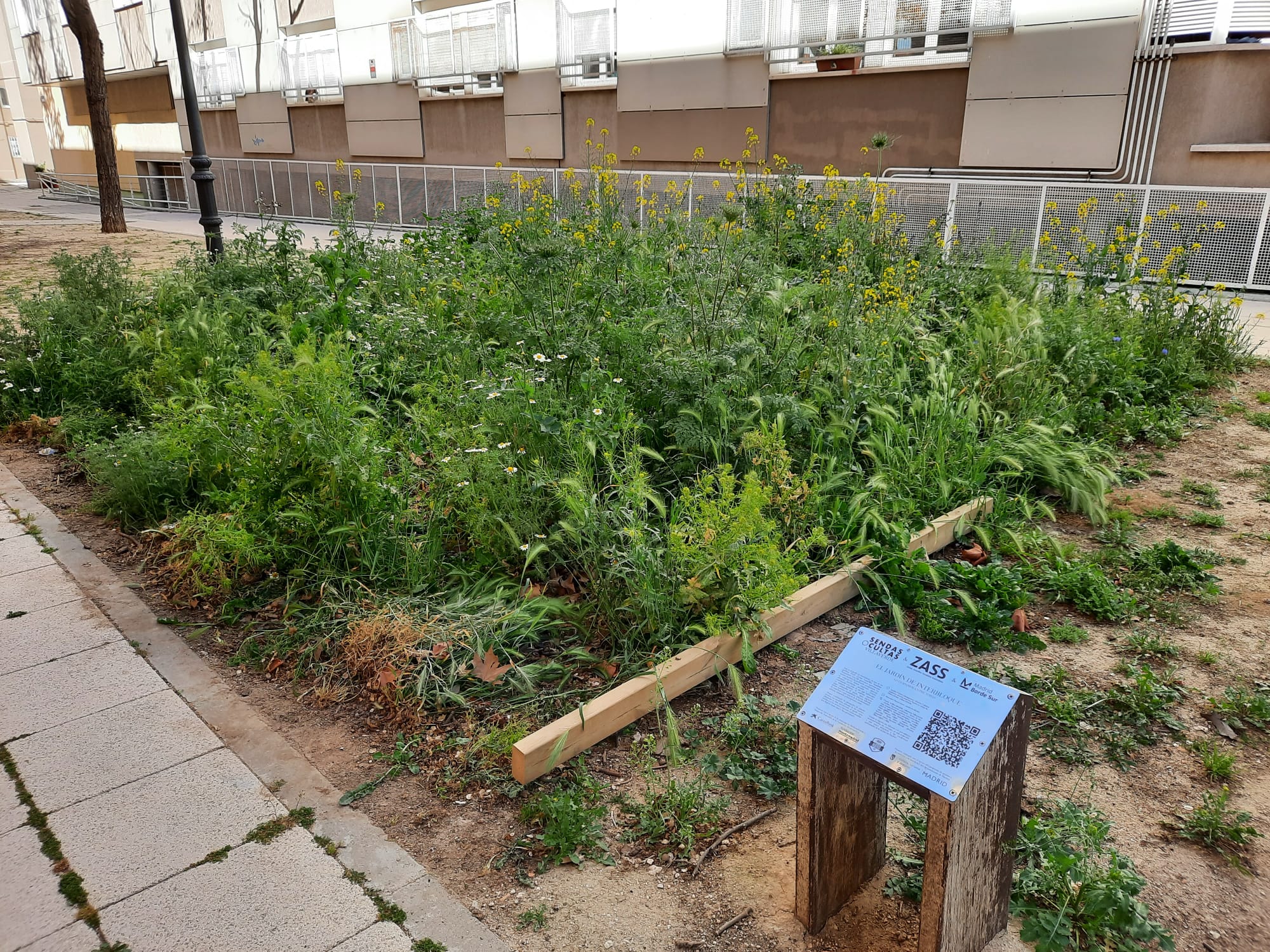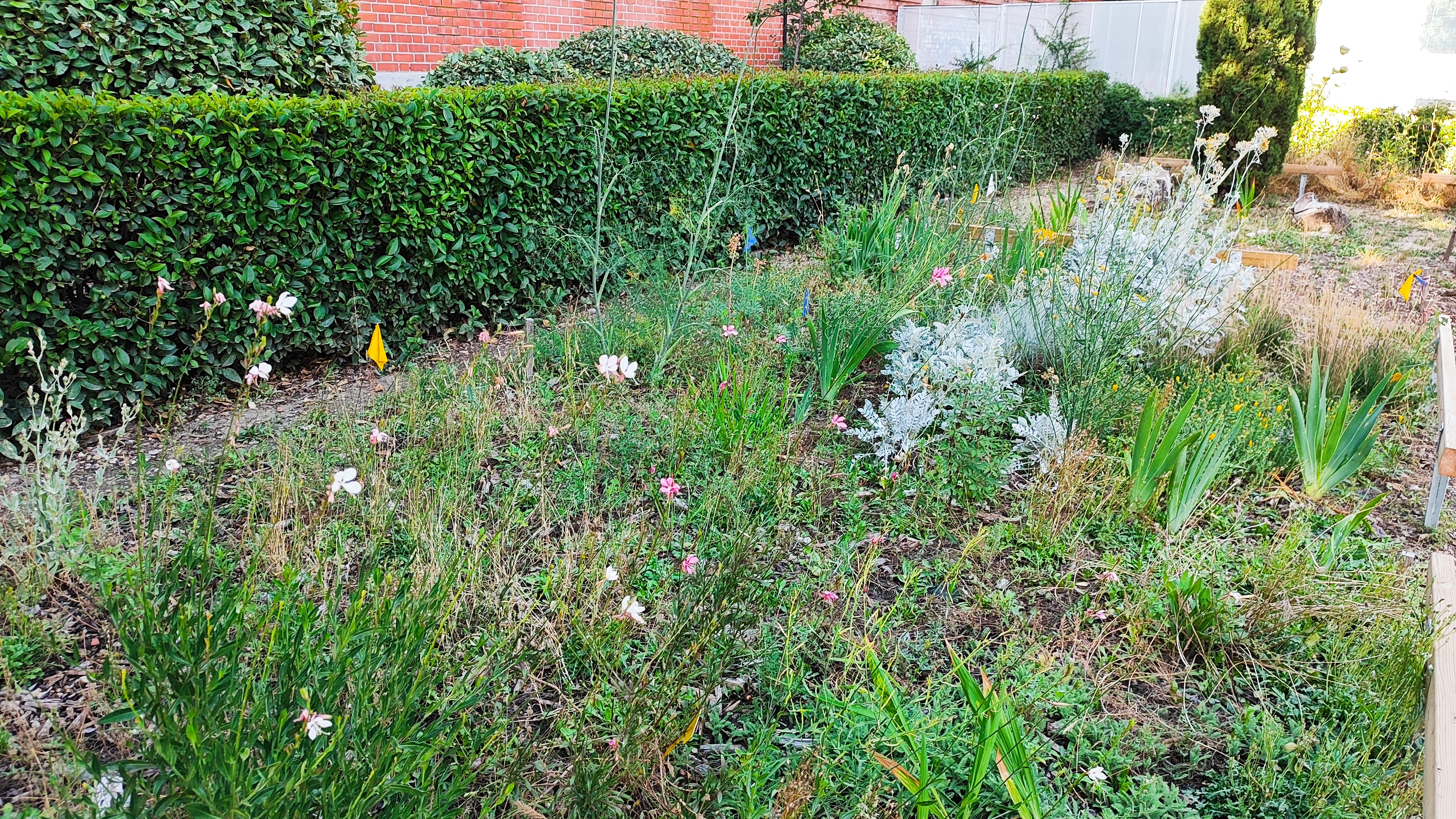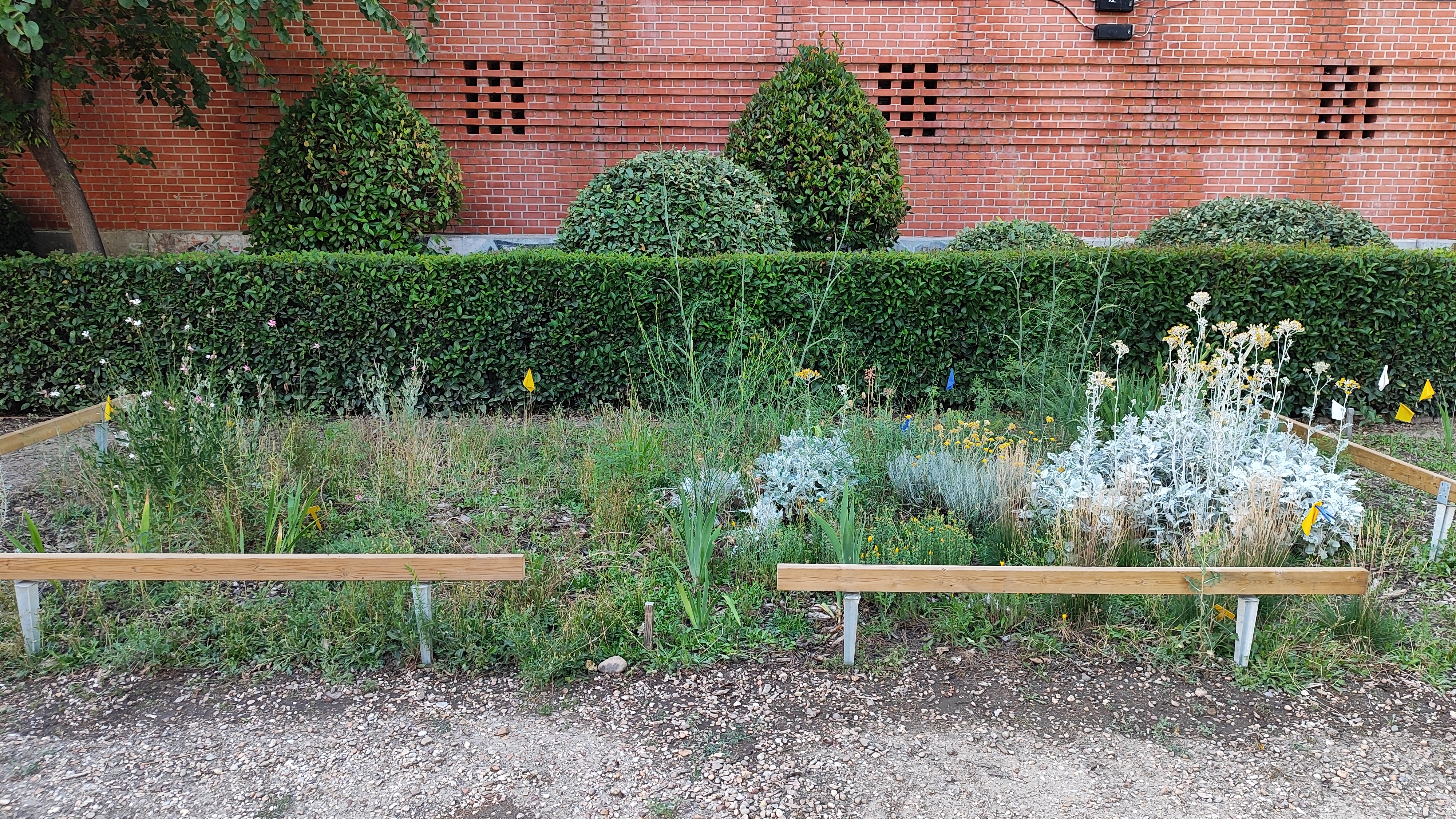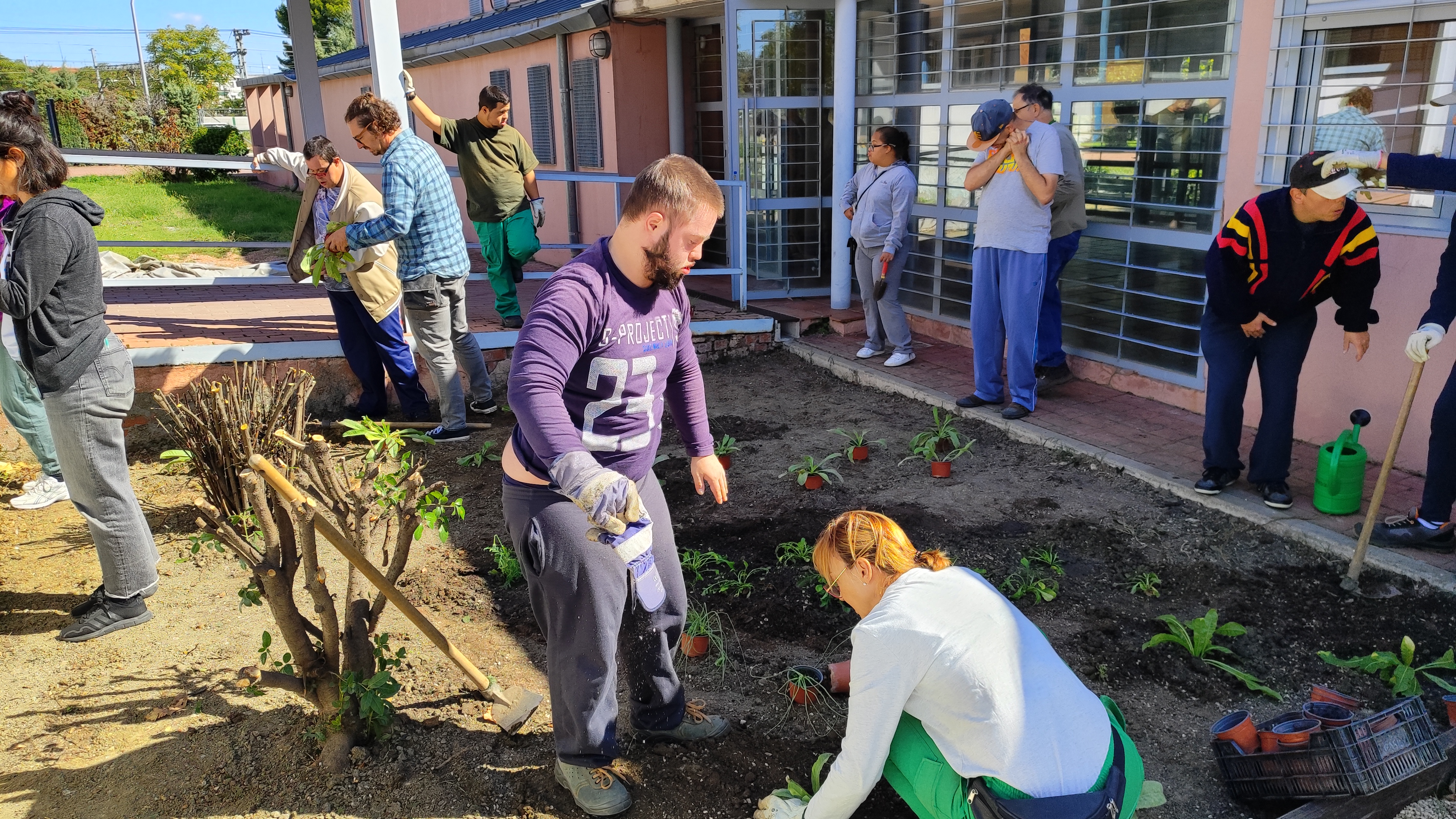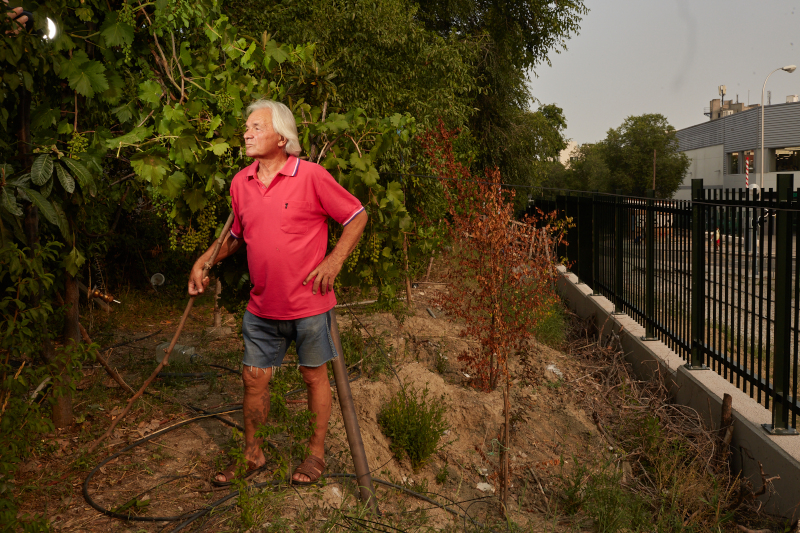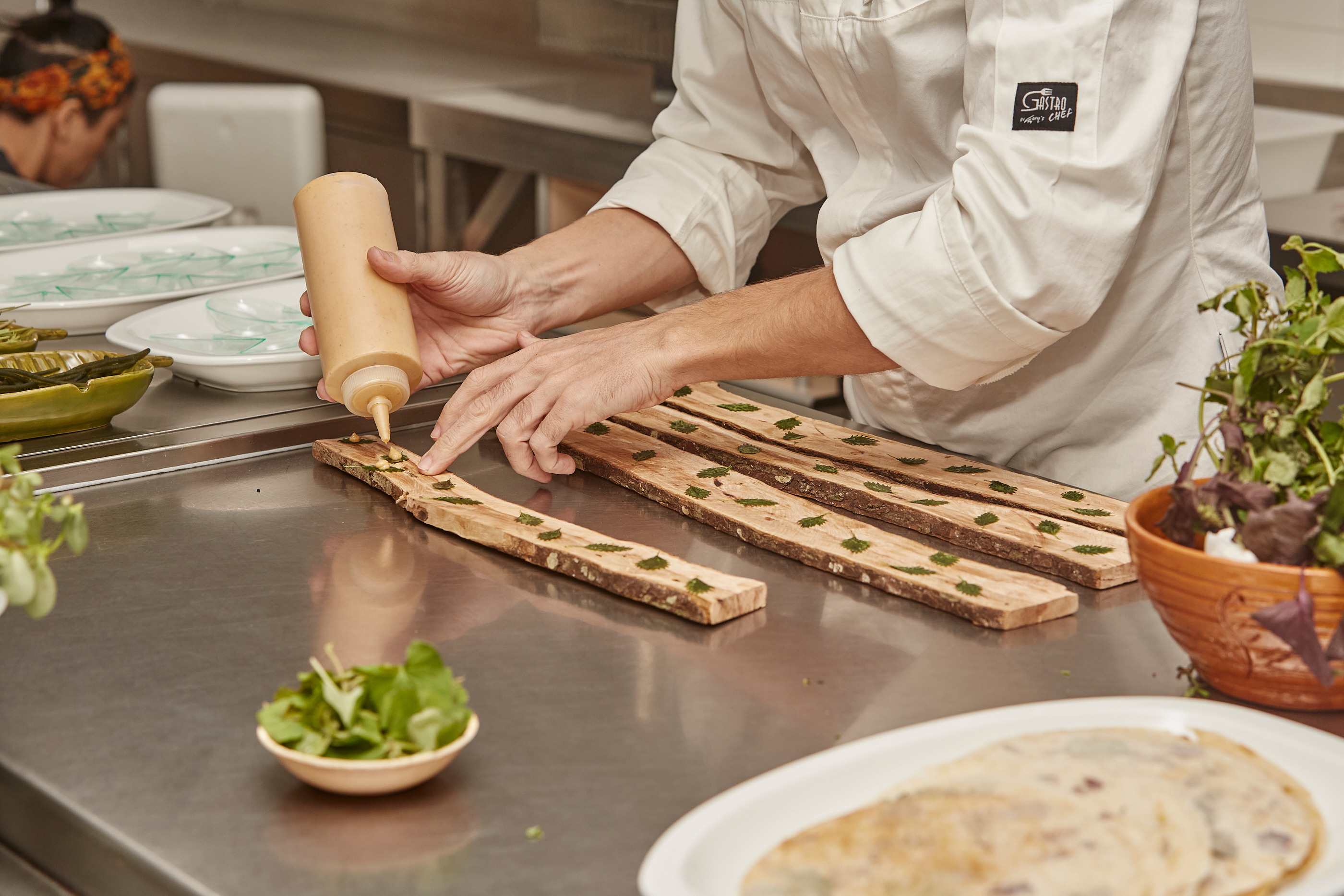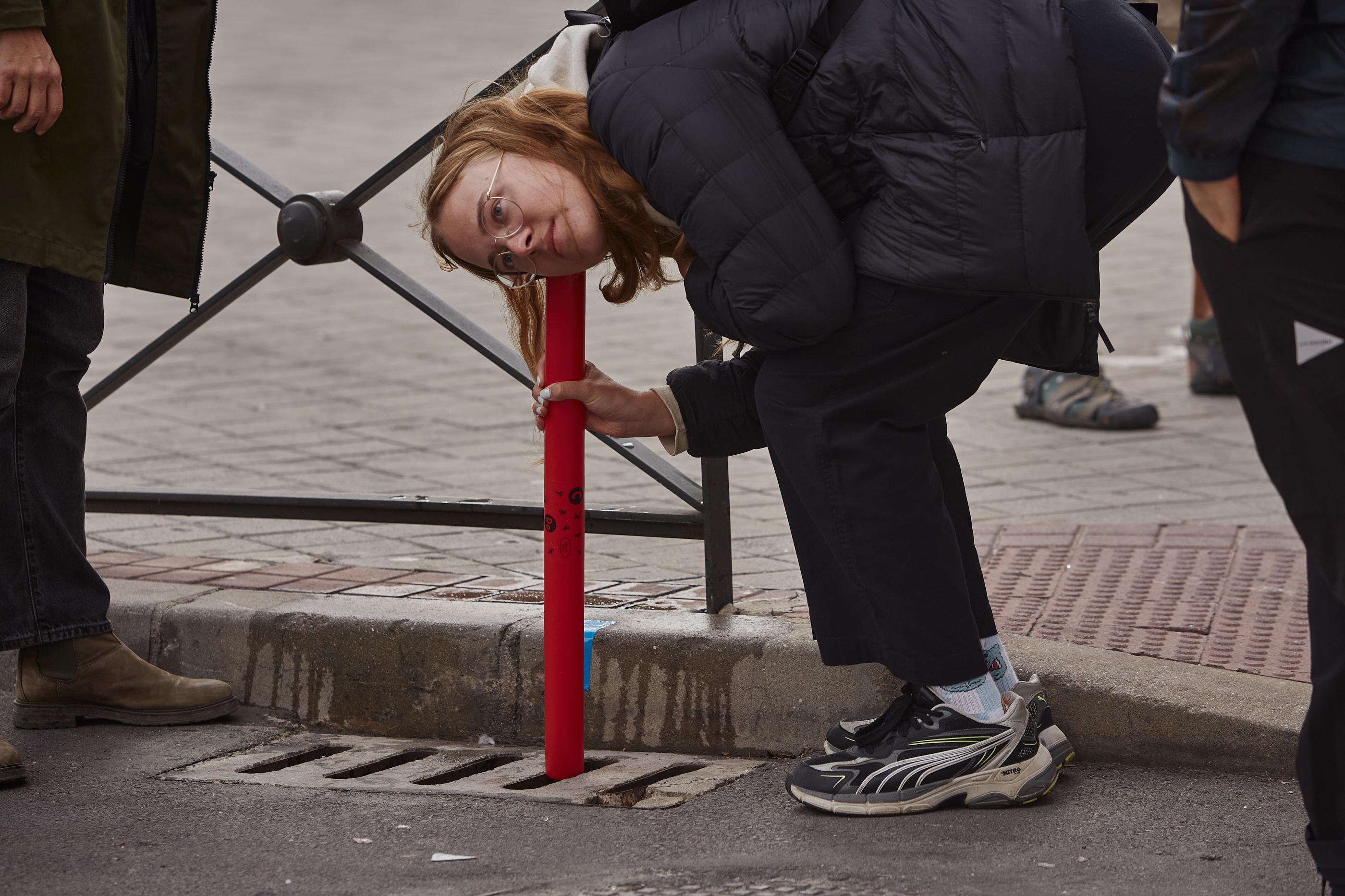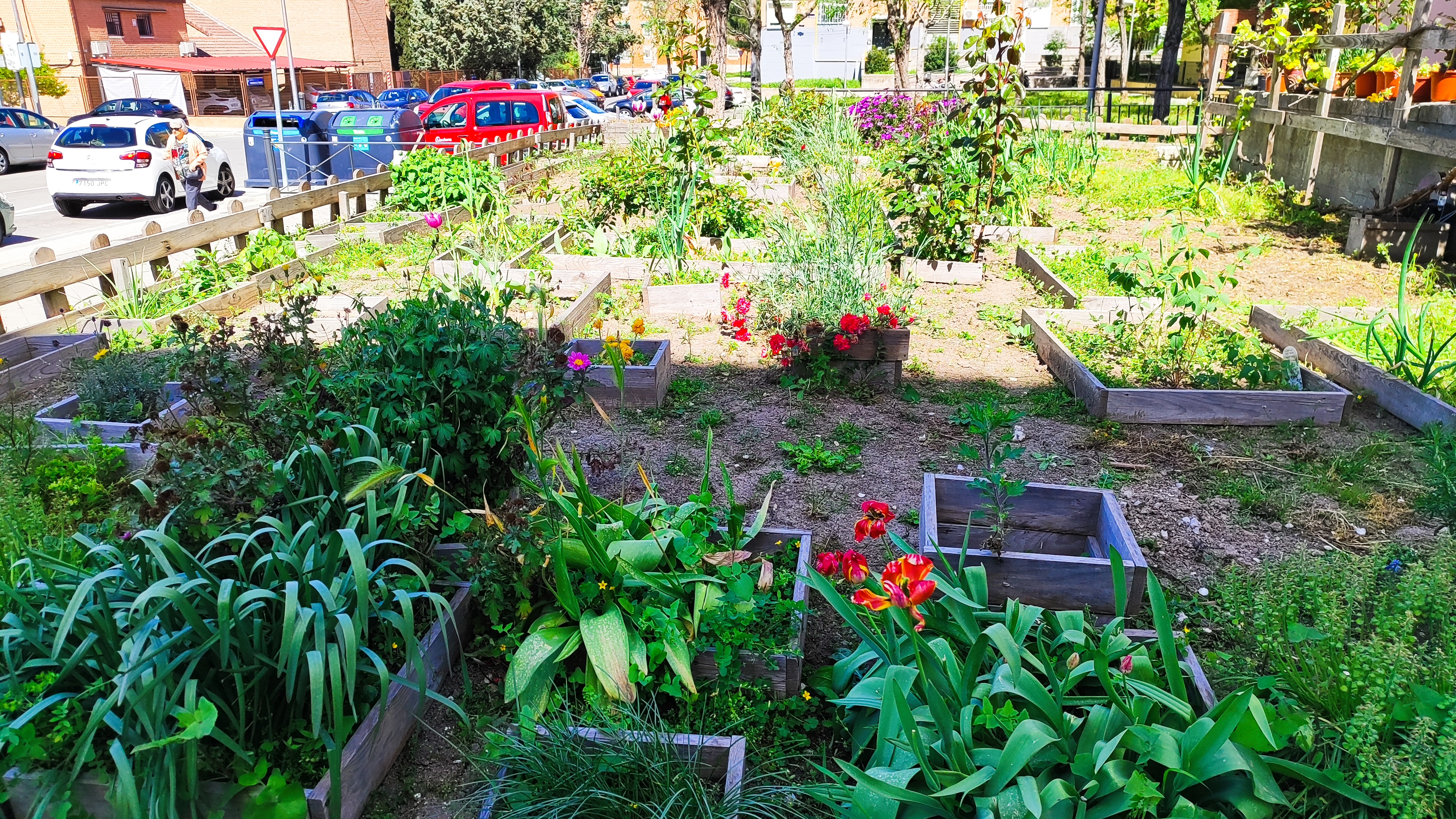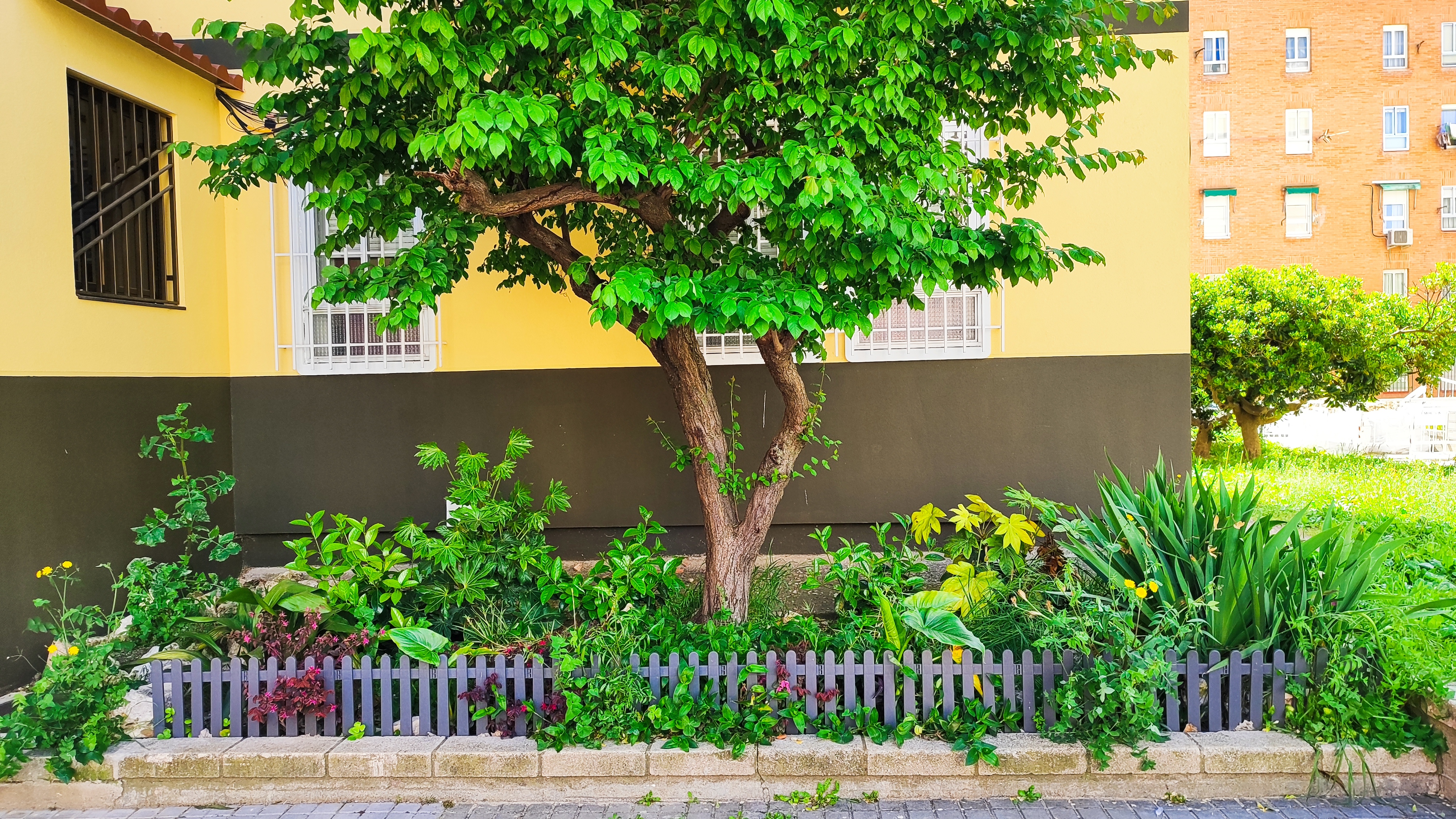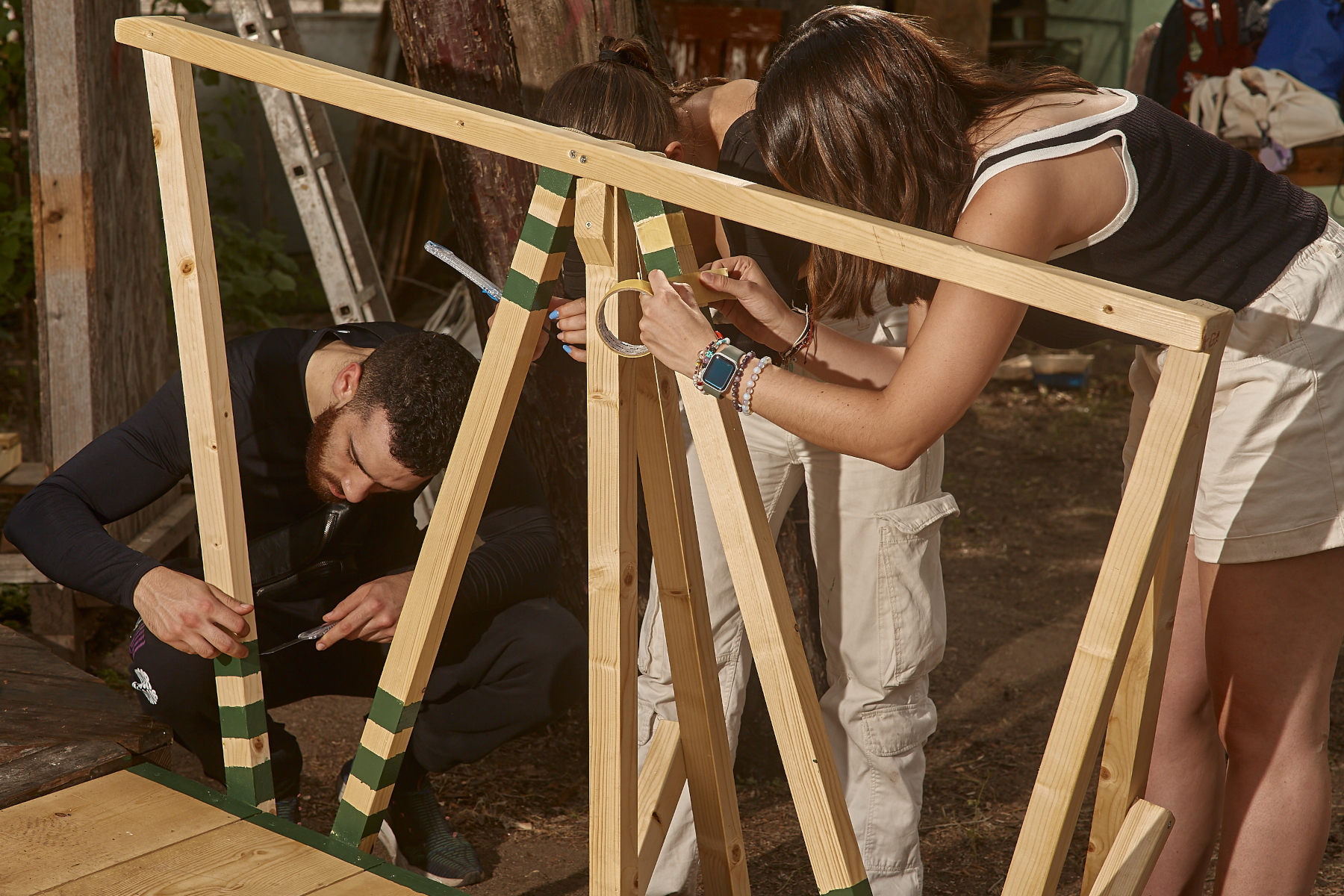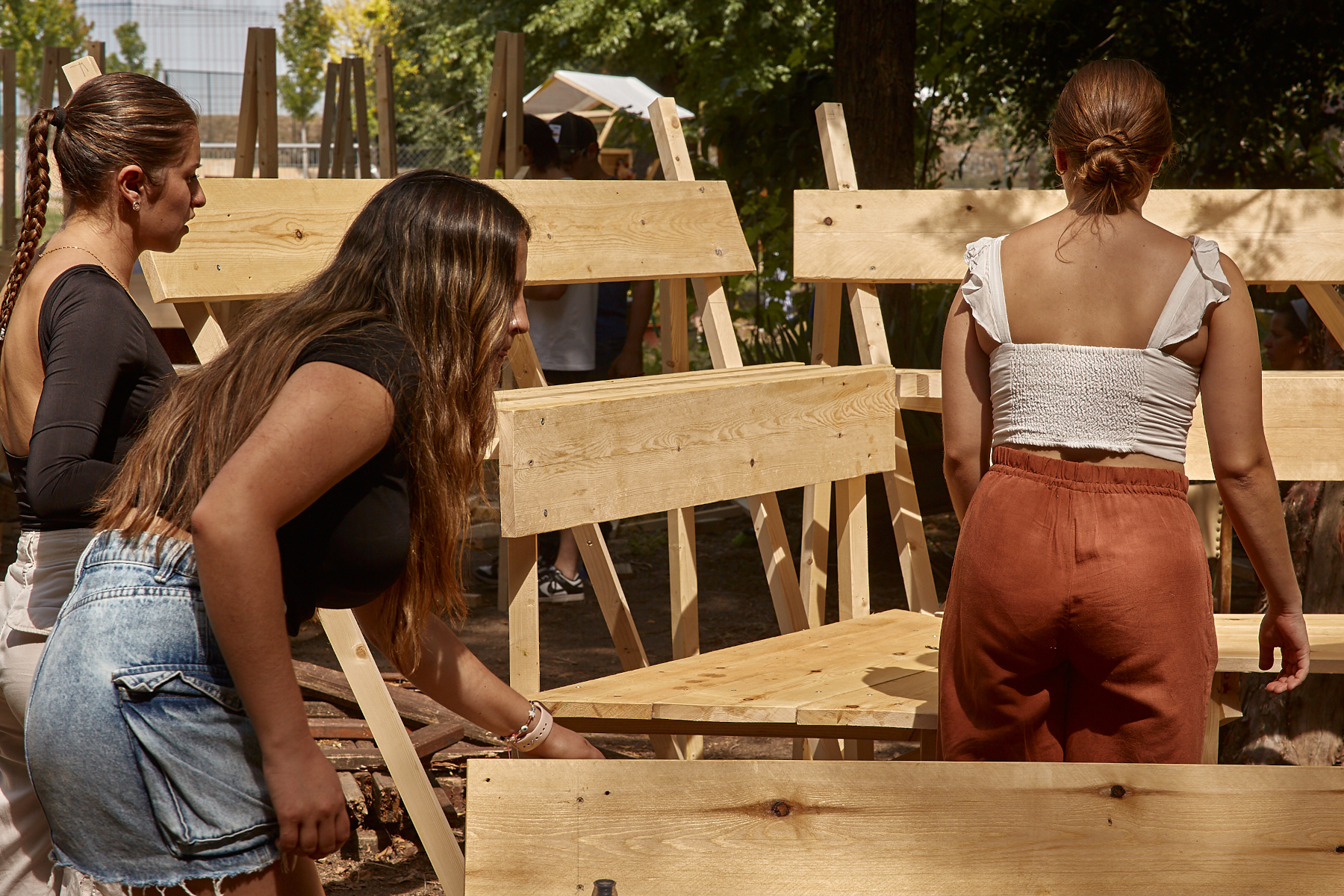Reconnecting with nature
Hidden PathsS-ZASS
Hidden PathsS-ZASS: Consolidating gardens
Hidden PathsS-ZASS: Consolidating gardens is a project, a challenge, an exploration of community gardening in the districts of the city of Madrid. An adventure that starts from a reality that has already begun years ago in the city's neighborhoods: The need of citizens to improve the spaces and common areas that have been degraded or abandoned by the administration to turn them into spaces for enjoyment, innovation and learning.
Spain
Local
Madrid
Mainly urban
It refers to other types of transformations (soft investment)
Yes
2025-01-10
No
No
No
As a representative of an organisation
Our project has begun to create an atlas of neighbourhood gardening in Madrid's districts, which includes their location, the architecture of the gardens, the stories and motivations that drove neighbourhood gardeners to become urban planners of public spaces, and has quantified other associated information such as the origin of the species in the inventoried gardens or the tonnes of CO2 that these gardens are absorbing in their neighbourhoods.
Sendas Ocultas-ZASS is a research project based on practice through different artistic and educational disciplines that provide a critical and reflective look at the disconnection we maintain with the urban nature of our surroundings. A research project with formats that cross the Atlas and the festival, which has as its setting the emerging urbanisms of the city of Madrid.
A reflection on the architecture of public space looking at the places from which collective intelligence works in the design of experimental gardens. We visualize the neighborhoods and urbanisms that favor the appearance of this type of spaces, and we map in real time accompanied by expert architects, urban planners, ecologists, landscapers and neighbors to add layers of information to the city that allow us to understand its complexity.
We promote art and culture as tools to communicate the innovation and knowledge of experimental gardening that has emerged from citizens in the neighborhoods of Madrid, tracing itineraries in search of communities that try to promote more sustainable changes around their gardens.
To date we have inventoried 80 neighbourhood gardens in 3 districts of Madrid (Fuencarral, Villaverde and Moratalaz), promoting the design and creation of 4 neighbourhood gardens with wild species adapted to the climate of Madrid in 4 degraded spaces.
Sendas Ocultas-ZASS is a research project based on practice through different artistic and educational disciplines that provide a critical and reflective look at the disconnection we maintain with the urban nature of our surroundings. A research project with formats that cross the Atlas and the festival, which has as its setting the emerging urbanisms of the city of Madrid.
A reflection on the architecture of public space looking at the places from which collective intelligence works in the design of experimental gardens. We visualize the neighborhoods and urbanisms that favor the appearance of this type of spaces, and we map in real time accompanied by expert architects, urban planners, ecologists, landscapers and neighbors to add layers of information to the city that allow us to understand its complexity.
We promote art and culture as tools to communicate the innovation and knowledge of experimental gardening that has emerged from citizens in the neighborhoods of Madrid, tracing itineraries in search of communities that try to promote more sustainable changes around their gardens.
To date we have inventoried 80 neighbourhood gardens in 3 districts of Madrid (Fuencarral, Villaverde and Moratalaz), promoting the design and creation of 4 neighbourhood gardens with wild species adapted to the climate of Madrid in 4 degraded spaces.
Innovation
Creativity
Citizen participation
Art as a tool for transformation
Changing the aesthetics of the garden
1 Experiment with new models of gardening and public spaces that adapt more sustainably to the climate change scenario in which we live.
Result: We have created 4 prototypes of experimental gardens in 4 neighborhoods of Madrid, composed mostly of wild herbaceous species adapted to the climate of Madrid with few water requirements,
2. Creation of a wild seed bank that can be used by associations and communities of neighbours interested in testing new models of dry gardens.
Result: In collaboration with the urban gardens of the Montemadrid Foundation and the Afandice occupational centre, we built 8 beds for multiplying native wild species with which we managed to produce and multiply our own seeds.
3. Turning gardens into citizen laboratories where environmental problems in cities can be identified and solutions can be found to raise awareness about the necessary change in the development model.
Result: Citizen science workshops held around the 4 prototypes of gardens created: Creation of humidity sensors, workshops on regenerative agriculture techniques for soil improvement, workshops on chemical-physical properties of soil, etc.
4. Calculate the amount of CO2 absorbed by the neighbourhood gardens in the districts of Madrid
Result: Quantification of the tonnes of CO2 from the gardens inventoried through the digital platform Garden Atlas. These quantities can be consulted in the gardens of the Fuencarral and Villaverde neighbourhoods of Madrid uploaded to said platform
Result: We have created 4 prototypes of experimental gardens in 4 neighborhoods of Madrid, composed mostly of wild herbaceous species adapted to the climate of Madrid with few water requirements,
2. Creation of a wild seed bank that can be used by associations and communities of neighbours interested in testing new models of dry gardens.
Result: In collaboration with the urban gardens of the Montemadrid Foundation and the Afandice occupational centre, we built 8 beds for multiplying native wild species with which we managed to produce and multiply our own seeds.
3. Turning gardens into citizen laboratories where environmental problems in cities can be identified and solutions can be found to raise awareness about the necessary change in the development model.
Result: Citizen science workshops held around the 4 prototypes of gardens created: Creation of humidity sensors, workshops on regenerative agriculture techniques for soil improvement, workshops on chemical-physical properties of soil, etc.
4. Calculate the amount of CO2 absorbed by the neighbourhood gardens in the districts of Madrid
Result: Quantification of the tonnes of CO2 from the gardens inventoried through the digital platform Garden Atlas. These quantities can be consulted in the gardens of the Fuencarral and Villaverde neighbourhoods of Madrid uploaded to said platform
1. Recovering run-down areas in neighbourhoods, without management and care by the administration, and turning them into gardens and places for meeting and learning
Result: Turning unused areas into places for meeting and learning, contributing to generating a sense of belonging and appropriation for a common space.
2. Create a garden model using wild species that does not compromise on aesthetic quality, assuming that due to our Mediterranean climate some of these species would wither or turn brown in the summer
Result: The experience gained in using wild species has allowed us to create planting modules with neighbours that combine different types of texture, volume and colour throughout the year, maintaining an aesthetic quality that conveys the existence of a garden care community.
3. Create and maintain learning communities in the creation of the experimental garden from the very beginning, generating an itinerary of workshops, experiences, interactions with artists and experts in the field. Result: This process or itinerary has provided the learning communities with tools to understand the new aesthetic model of the garden and to transmit its benefits, in terms of increased biodiversity, lower water consumption, adaptation to the current climate change scenario, and most importantly, to understand that a garden does not always have to be green to have life or transmit care.
Result: Turning unused areas into places for meeting and learning, contributing to generating a sense of belonging and appropriation for a common space.
2. Create a garden model using wild species that does not compromise on aesthetic quality, assuming that due to our Mediterranean climate some of these species would wither or turn brown in the summer
Result: The experience gained in using wild species has allowed us to create planting modules with neighbours that combine different types of texture, volume and colour throughout the year, maintaining an aesthetic quality that conveys the existence of a garden care community.
3. Create and maintain learning communities in the creation of the experimental garden from the very beginning, generating an itinerary of workshops, experiences, interactions with artists and experts in the field. Result: This process or itinerary has provided the learning communities with tools to understand the new aesthetic model of the garden and to transmit its benefits, in terms of increased biodiversity, lower water consumption, adaptation to the current climate change scenario, and most importantly, to understand that a garden does not always have to be green to have life or transmit care.
1. One of the key objectives of the project is to democratise knowledge and integrate groups that generally do not have the opportunity to participate in innovation projects. For this reason, we decided to choose neighbourhoods on the outskirts, far from the centre of Madrid.
Another key and innovative aspect was to count on Afandice, a foundation that works with people with intellectual disabilities. From its nurseries and in close collaboration with its occupational gardening group, we have multiplied, germinated and cultivated the wild plants with which we have created the neighbourhood gardens
2. The entire educational itinerary to create the experimental gardens, the walks through the neighborhoods to discover the local gardens, the access to the activities of the scheduled festivals, were free and open access, focusing on local communities.
Another key and innovative aspect was to count on Afandice, a foundation that works with people with intellectual disabilities. From its nurseries and in close collaboration with its occupational gardening group, we have multiplied, germinated and cultivated the wild plants with which we have created the neighbourhood gardens
2. The entire educational itinerary to create the experimental gardens, the walks through the neighborhoods to discover the local gardens, the access to the activities of the scheduled festivals, were free and open access, focusing on local communities.
Regarding the creation of new ZASS gardens, they responded to the need of the residents to improve a degraded and abandoned space through gardening. They were not actions that were born from preconceived ideas of the project team. The process of designing and creating the gardens was open to both the community of residents and anyone interested in participatory methodologies. There was a direct environmental benefit to the site and also to the learning communities that were created around the ZASS gardens, as they acquired tools and knowledge to manage a dry or experimental garden. The gardens have become a meeting and learning place for their caretakers and occasional users.
Perhaps the network of alliances created around the project is one of its strong points. The Madrid City Council is involved in different European environmental initiatives, among which the Deep-Demonstration stands out, whose objectives revolve around the design and deployment of interconnected interventions that link Nature and Health as vectors for the planning and decarbonisation of the city. These are complex proposals that require a new way of understanding, designing and managing the city supported by both private companies and the University.
However, they run the risk of becoming imposed proposals, incapable of connecting with the language, motivations and community interests. At the moment, these initiatives are in the early stages, developed at a conceptual level, and present challenges at an operational level that this project focuses on: flexibility when experimenting, creating spaces for collaborative dialogue and exchange, introducing citizens to the process, etc.
The development and implementation of systemic solutions requires collaboration between multiple agents and this project was able to create a bridge between municipal policies and local initiatives and practices that were already working along similar lines, to articulate and amplify them. The project achieved the complicity of the Madrid City Council by granting us permission to intervene in the degraded spaces of which it was the owner of the land. We managed to build networks with the social agents of the neighborhoods where we intervened, becoming accomplices of the project. We also obtained funding from the cultural area of the Madrid City Council, which was attracted by a project that hybridized art, culture and nature, as well as funding from private entities such as the Montemadrid Foundation. Considering it a project that involved citizens in the improvement of their public spaces, incapable of connecting with the language, motivations and community interests.
However, they run the risk of becoming imposed proposals, incapable of connecting with the language, motivations and community interests. At the moment, these initiatives are in the early stages, developed at a conceptual level, and present challenges at an operational level that this project focuses on: flexibility when experimenting, creating spaces for collaborative dialogue and exchange, introducing citizens to the process, etc.
The development and implementation of systemic solutions requires collaboration between multiple agents and this project was able to create a bridge between municipal policies and local initiatives and practices that were already working along similar lines, to articulate and amplify them. The project achieved the complicity of the Madrid City Council by granting us permission to intervene in the degraded spaces of which it was the owner of the land. We managed to build networks with the social agents of the neighborhoods where we intervened, becoming accomplices of the project. We also obtained funding from the cultural area of the Madrid City Council, which was attracted by a project that hybridized art, culture and nature, as well as funding from private entities such as the Montemadrid Foundation. Considering it a project that involved citizens in the improvement of their public spaces, incapable of connecting with the language, motivations and community interests.
Neighbourhood mediation: For 4 years we had a continuous presence in the area to understand the dynamics of the neighbourhoods, their social and cultural agents, as well as their needs regarding the improvement of their spaces. This allowed us not to be seen as parachutists who came with magical solutions or solutions not adapted to their reality. This prior trust was fundamental for the creation of the learning communities.
Landscaping: We have a landscaper on the team with extensive experience in the use of wild flora in the design of gardens and in the use of artistic techniques to unblock environmental problems in urban contexts. This experience was fundamental to transmit the idea to the neighbourhood that a garden in Madrid cannot always be green and that it was necessary to change the aesthetics of public gardens.
Citizen Science: We have a team of biologists who are experts in applying the citizen science methodology to processes. The ZASS gardens created became learning spaces that allowed us to collect environmental data, map species, analyze soils or air quality and measure impacts, emissions or heat footprint.
Art:: Through the festivals scheduled throughout the project, we turned the ZASS gardens created and the discovered neighborhood gardens into art and culture scenarios that allowed us to experiment, celebrate, listen, prototype and produce new narratives about the change in aesthetics in the gardens, reaching new audiences.
These 4 disciplines were in continuous dialogue, always trying to respond to the needs of the neighborhood beneficiaries of the project.
Landscaping: We have a landscaper on the team with extensive experience in the use of wild flora in the design of gardens and in the use of artistic techniques to unblock environmental problems in urban contexts. This experience was fundamental to transmit the idea to the neighbourhood that a garden in Madrid cannot always be green and that it was necessary to change the aesthetics of public gardens.
Citizen Science: We have a team of biologists who are experts in applying the citizen science methodology to processes. The ZASS gardens created became learning spaces that allowed us to collect environmental data, map species, analyze soils or air quality and measure impacts, emissions or heat footprint.
Art:: Through the festivals scheduled throughout the project, we turned the ZASS gardens created and the discovered neighborhood gardens into art and culture scenarios that allowed us to experiment, celebrate, listen, prototype and produce new narratives about the change in aesthetics in the gardens, reaching new audiences.
These 4 disciplines were in continuous dialogue, always trying to respond to the needs of the neighborhood beneficiaries of the project.
1. Identify, activate and replicate new models of experimental gardening, understood as living laboratories where alternative models to current green areas can be generated as a community, in which to rethink their aesthetics, functionality and management.
2. The Sendas Ocultas -ZASS project identifies and makes visible anonymous citizens who, through community gardening, transform their environment and build the city from the community. Acting as a learning tool, the project documents and recognizes these initiatives, highlighting their impact and promoting their integration into urban regeneration processes.
3. Connect this experience with existing programs to multiply their impact and capacity for transformation, paying special attention to those championed by public administration (due to their repercussion and impact)
4. Turning gardens into citizen laboratories where environmental problems in cities can be identified and solutions can be found to raise awareness about the necessary change in the development model.
5. Promote citizen science as a tool for the democratization of knowledge, its production and dissemination, as well as for the promotion of public commitment and the generation of critical, responsible communities that are aware of the environmental challenges that the city faces.
6. The visibility of community gardens is strengthened by digital tools such as Garden Atlas, which allows for interactive and participatory mapping, documenting their impact and evolution. These platforms generate an accessible archive that facilitates analysis, dissemination and connection between urban regeneration initiatives and community gardening.
7. The walk becomes a key format for transmitting the architectural culture of the neighbourhood, exploring the urbanism of the open block through a narrative that combines memory and lived experience.
2. The Sendas Ocultas -ZASS project identifies and makes visible anonymous citizens who, through community gardening, transform their environment and build the city from the community. Acting as a learning tool, the project documents and recognizes these initiatives, highlighting their impact and promoting their integration into urban regeneration processes.
3. Connect this experience with existing programs to multiply their impact and capacity for transformation, paying special attention to those championed by public administration (due to their repercussion and impact)
4. Turning gardens into citizen laboratories where environmental problems in cities can be identified and solutions can be found to raise awareness about the necessary change in the development model.
5. Promote citizen science as a tool for the democratization of knowledge, its production and dissemination, as well as for the promotion of public commitment and the generation of critical, responsible communities that are aware of the environmental challenges that the city faces.
6. The visibility of community gardens is strengthened by digital tools such as Garden Atlas, which allows for interactive and participatory mapping, documenting their impact and evolution. These platforms generate an accessible archive that facilitates analysis, dissemination and connection between urban regeneration initiatives and community gardening.
7. The walk becomes a key format for transmitting the architectural culture of the neighbourhood, exploring the urbanism of the open block through a narrative that combines memory and lived experience.
PHASE 0: ZASS (Sustainable Yellow Sensitive Zones)
Zass is a project that seeks to experiment with a diverse community network on new gardening models that adapt more sustainably to the climate change scenario in which we live through the use of wild herbaceous species During this phase we generate a diverse and open learning community around the study of wild species that best adapt to urban soils. With the help of Afandice, an occupational center that works with people with disabilities, we produce in their nurseries the wild species with which we will design the ZASS gardens
PHASE 1: HIDDEN PATHS -ZASS
In this new phase, through artistic practices, we want to continue expanding the recognition of ecosystems in collaboration with the Nomad Garden collective and the use of the Garden Atlas platform, a database that we use to map in detail the discovered neighborhood gardens. The research developed in this phase is produced through open paths
Phase 1B: ANOTHER VIEW: CULTURAL AND ARTISTIC INTERFERENCES
To reflect on the new gardens, we need another way of looking. Invite artists, botanists, and diviners of urban culture to help us visualize the paths towards a city that is more respectful of its surroundings. We turn these experimental gardens into new art and culture scenarios that allow us to produce new narratives to reach new audiences. These artistic practices translate the ecological innovation of the found gardens through other languages, to reach completely different audiences, both in interests and ages. The experimental gardens found and created are the stages of art and culture in which actions of disciplines linked to the performing arts and the world of performance, gastronomy as an artistic practice, words and poetry, or experimental music are developed. They facilitate the production of SITE-SPECIFIC and in some cases through workshops in which we involve the different local realities.
PHASE 1C: OWN ACTIO
Zass is a project that seeks to experiment with a diverse community network on new gardening models that adapt more sustainably to the climate change scenario in which we live through the use of wild herbaceous species During this phase we generate a diverse and open learning community around the study of wild species that best adapt to urban soils. With the help of Afandice, an occupational center that works with people with disabilities, we produce in their nurseries the wild species with which we will design the ZASS gardens
PHASE 1: HIDDEN PATHS -ZASS
In this new phase, through artistic practices, we want to continue expanding the recognition of ecosystems in collaboration with the Nomad Garden collective and the use of the Garden Atlas platform, a database that we use to map in detail the discovered neighborhood gardens. The research developed in this phase is produced through open paths
Phase 1B: ANOTHER VIEW: CULTURAL AND ARTISTIC INTERFERENCES
To reflect on the new gardens, we need another way of looking. Invite artists, botanists, and diviners of urban culture to help us visualize the paths towards a city that is more respectful of its surroundings. We turn these experimental gardens into new art and culture scenarios that allow us to produce new narratives to reach new audiences. These artistic practices translate the ecological innovation of the found gardens through other languages, to reach completely different audiences, both in interests and ages. The experimental gardens found and created are the stages of art and culture in which actions of disciplines linked to the performing arts and the world of performance, gastronomy as an artistic practice, words and poetry, or experimental music are developed. They facilitate the production of SITE-SPECIFIC and in some cases through workshops in which we involve the different local realities.
PHASE 1C: OWN ACTIO
The entire project methodology can be extrapolated to other urban environments where the aim is to promote neighbourhood gardening through art, culture and citizen science.
It is also applicable to degraded environments in urban contexts where the aim is to create neighbourhood gardens with species with few water needs and using a participatory methodology.
It is also applicable to degraded environments in urban contexts where the aim is to create neighbourhood gardens with species with few water needs and using a participatory methodology.
The city of the future is going through a reconceptualization. Cities must seek models that allow us to overcome the artificial division between city and nature, recover natural systems and processes within the urban fabric, promote co-habitation with other species or encourage public commitment to a more sustainable, healthy and resilient city.
We need a city that is better adapted to climate change and capable of contributing to improving the quality of life and health of people, regardless of the neighborhood in which we live. In the case of Madrid, it faces deficiencies that come from afar, especially visible in the periphery, where green area models have been developed that have little to do with the environmental and climatic particularities of the environment, where decontextualized aesthetic models have been replicated and a commitment has been made to industrialized, homogeneous and little diverse gardening.
In order to generate new, appropriable design and management models, it is necessary to open up debate and facilitate meeting spaces between different agents, to have the community participate in the definition and articulation of new models of landscaped spaces and to do so through the combination of the use of citizen science, which provides rigor and quantifiable information, with playful and artistic practices capable of exciting and generating new imaginaries that excite and mobilize citizens and facilitate experimentation, models that serve as prototypes for agents with competencies and their regulatory framework.
We need a city that is better adapted to climate change and capable of contributing to improving the quality of life and health of people, regardless of the neighborhood in which we live. In the case of Madrid, it faces deficiencies that come from afar, especially visible in the periphery, where green area models have been developed that have little to do with the environmental and climatic particularities of the environment, where decontextualized aesthetic models have been replicated and a commitment has been made to industrialized, homogeneous and little diverse gardening.
In order to generate new, appropriable design and management models, it is necessary to open up debate and facilitate meeting spaces between different agents, to have the community participate in the definition and articulation of new models of landscaped spaces and to do so through the combination of the use of citizen science, which provides rigor and quantifiable information, with playful and artistic practices capable of exciting and generating new imaginaries that excite and mobilize citizens and facilitate experimentation, models that serve as prototypes for agents with competencies and their regulatory framework.
-Four ZASS gardens created using a participatory methodology in the Villaverde neighbourhood in the following spaces:
1. María Moliner public library,
2. Inter-block space in front of a space for culture and solidarity (ECYS) located in the San Cristobal neighbourhood
3. Afandice
4. In a plot of a children's space in the San Cristobal neighbourhood.
-80 neighbourhood gardens inventoried in the Villaverde, Fuencarral and Moratalaz neighbourhoods
- Conditioning of 8 plots for multiplying seeds of wild herbaceous species in the urban gardens of the Ponde de León public school (Usera, Madrid) and in Afandice
-Creation of a wild seed bank to distribute among the neighbourhood gardens of Madrid
- Involve the administration (municipal councils of Villaverde and Moratalaz) in the improvement of the inter-block spaces through neighbourhood gardening.
- Convert an agent such as afandice that works with people with intellectual disabilities into an innovation center regarding the use of wild species in gardening.
- Contribute to changing the aesthetics of the green areas of a city like Madrid, where traditional gardening species that are not adapted to the current climate change scenario are still used
- Contribute to the Madrid City Council regularizing neighborhood gardening in the city, highlighting the biodiversity that citizen gardening initiatives provide
1. María Moliner public library,
2. Inter-block space in front of a space for culture and solidarity (ECYS) located in the San Cristobal neighbourhood
3. Afandice
4. In a plot of a children's space in the San Cristobal neighbourhood.
-80 neighbourhood gardens inventoried in the Villaverde, Fuencarral and Moratalaz neighbourhoods
- Conditioning of 8 plots for multiplying seeds of wild herbaceous species in the urban gardens of the Ponde de León public school (Usera, Madrid) and in Afandice
-Creation of a wild seed bank to distribute among the neighbourhood gardens of Madrid
- Involve the administration (municipal councils of Villaverde and Moratalaz) in the improvement of the inter-block spaces through neighbourhood gardening.
- Convert an agent such as afandice that works with people with intellectual disabilities into an innovation center regarding the use of wild species in gardening.
- Contribute to changing the aesthetics of the green areas of a city like Madrid, where traditional gardening species that are not adapted to the current climate change scenario are still used
- Contribute to the Madrid City Council regularizing neighborhood gardening in the city, highlighting the biodiversity that citizen gardening initiatives provide

